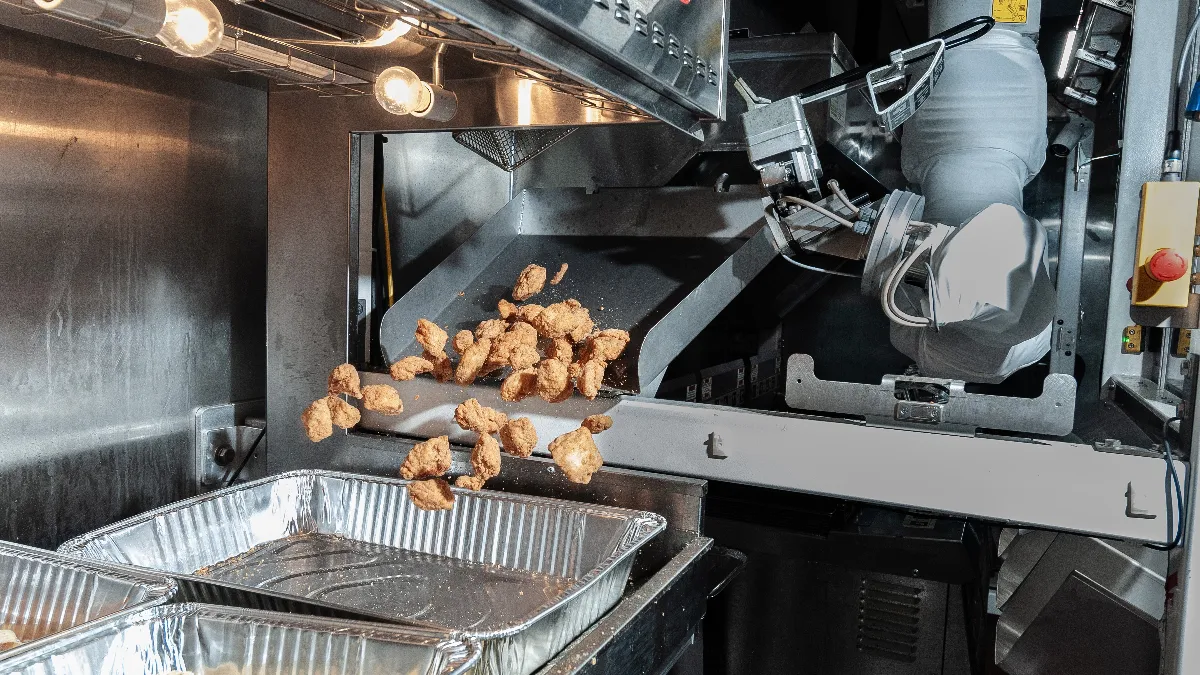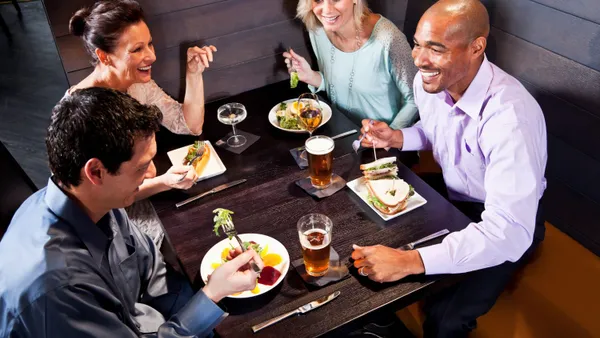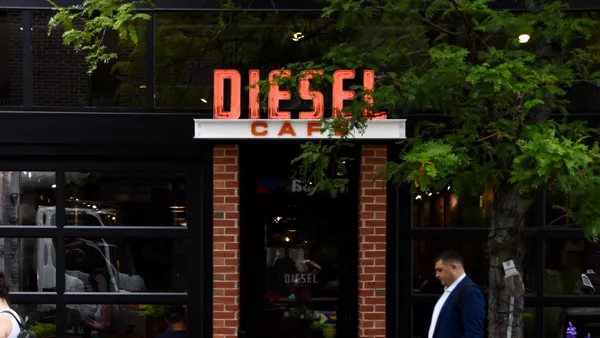Dive Brief:
- Thirty-two percent of diners would prefer not to see robots prepare their food, according to Big Red Rooster research emailed to Restaurant Dive. Nearly 30% of restaurant customers would be skeptical if they viewed robots prepping meals or delivering food to tables.
- Conversely, 41% of diners like the idea of robots cleaning the dining room, bussing tables (40%) and delivering orders to tables (38%). A smaller percentage, 31% and 27% respectively, are open to robots that deliver orders to your home or prepare/assemble meals.
- The autonomous mobile robots market is expected to grow annually at a rate of 43% through 2027, according to LogisticsIQ, and the cooking robots market is predicted to grow 16% annually through 2028. These estimates come as restaurants increasingly turn to the technology to save on labor costs amid a historic worker shortage.
Dive Insight:
Automated technology experienced a significant uptick in restaurant adoption during the pandemic as desire for contactless experiences grew and operators struggled with staffing.
The technology offers clear benefits. Miso Technologies claims its Flippy Wings, in a test at Buffalo Wild Wings, has increased food production speed up to 20% while also decreasing oil spillage.
Such automated technology seems to be yielding a strong enough return to warrant expansion and more experimentation at restaurants. White Castle initiated its test of Miso's robot chef Flippy in 2020 and recently grew that deployment to 100 more restaurants, for example. Chipotle just began a test of Miso's Chippy to make its tortilla chips, while Chowbotics’ salad-making robot Sally has been deployed by Saladworks and acquired by DoorDash.
Restaurant automation technology has generated investor confidence — Miso recently captured $50 million in Series C and D funding, and has goals to raise an additional $40 million. But diner comfort levels around robotics' role in restaurants is mixed.
Gen Z and millennial diners are more likely to feel positive emotions, like excitement or happiness, if they see back-of-house automation such as Flippy or Chippy, per Big Red Rooster's report. But many dine-in consumers across demographics still prefer and expect human interaction within the industry built on not just food, but also service.
"Consumers have heightened expectations around speed, accuracy, intelligence, and automation and are more receptive than ever to the technologies that provide them. Yet most restaurant consumers still feel human beings are integral, even critical, to the restaurant experience regardless of sector or fulfillment type," the report said.
Big Red Rooster's data suggests consumers would prefer a human to welcome them, prepare their food, deliver it to the table or home and clean the restaurant. Conversely, customers prefer a machine to customize orders, take orders and expedite orders.
The acceleration of this technology, particularly through the pandemic, has led 26% of consumers to anticipate dining at a fully automated restaurant as early as 2025, per the report. In fact, 50% of operators plan to deploy automated tech in the next two to three years, according to Lightspeed.













